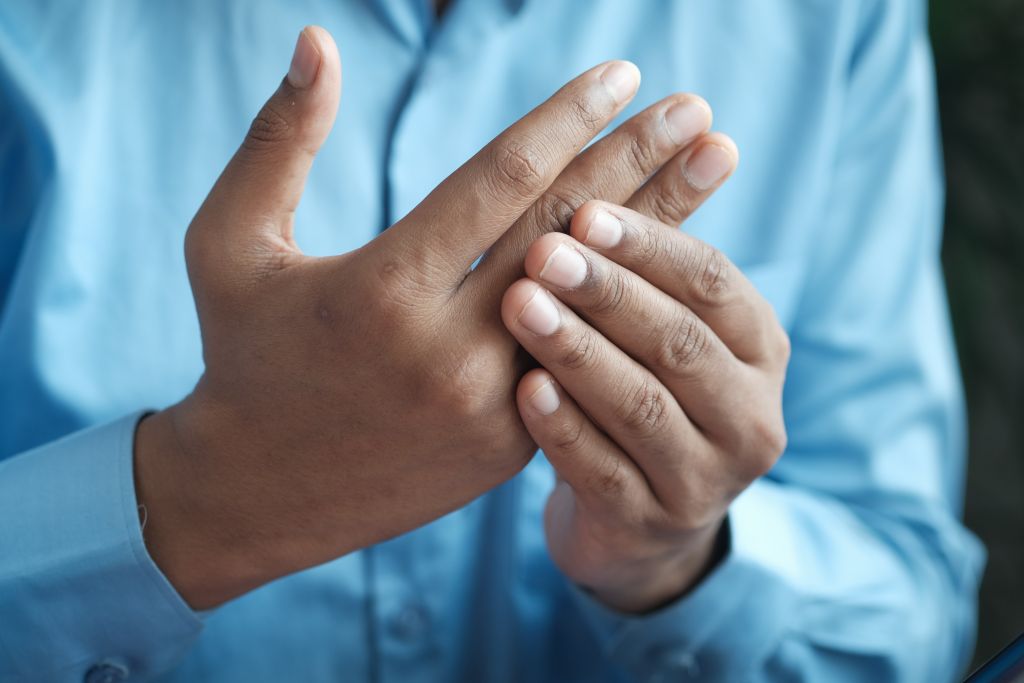Joint Pain

Joint pain may be more common than most people assume. According to the CDC, about 24% of the adult population in the United States suffers from arthritis. Approximately one in four of those individuals experiences serious pain from arthritis.
Arthritis is a medical condition where a person experiences tenderness and swelling of one or more joints. There are several forms of arthritis. The two most common forms are rheumatoid arthritis and osteoarthritis. While people of all ages can experience arthritis, it’s more common for aging adults.
There are several risk factors for arthritis. These include:

- Age – Those over 50 are more likely to experience some types of arthritis, including gout, rheumatoid arthritis, and osteoarthritis. Post-menopausal women are also more likely to develop arthritis.
- Heredity – Some forms of arthritis can run in the family. If a family member suffers from arthritis, it’s more common that you will too.
- Sex – Men are more likely to experience some forms of arthritis, like gout. The same applies to women, who are more likely to experience rheumatoid arthritis.
- Past Joint Injuries – Previous injuries to joints make it more likely that arthritis will develop in that same joint. These injuries may be related to sports or occupational activities.
- Obesity – Extra weight on the body adds pressure to the joints, particularly the spine, hips, and knees. Obesity leads to a higher risk of arthritis.
- Joint Infection or Trauma – Any trauma or infection to a joint may weaken it and make it more likely a person will experience arthritis in life.
Most of the symptoms related to arthritis are associated with the joints. The type of arthritis can affect the symptoms. However, some of the most common signs include the following:
- Joint stiffness, especially after sitting or when waking in the morning.
- A slow progression of worsening joint pain.
- Diminished range of motion with discomfort at the end.
- Tenderness or pain in a joint that worsens with activity or movement.
- Weakness of the muscles near a joint.
- Swelling from joint bony enlargement (also called bone spurs).
A variety of treatment options are available for joint pain. Interventional pain procedures include:
- Intra-articular corticosteroid injections for knee, hip, and shoulder pain
- Bursa injections for problems like tennis elbow or iliotibial band syndrome (ITBS)
- Viscosupplementation injections for rooster comb (chronic knee pain)
- Sacroiliac joint treatments for leg and buttock pain
- Hip denervation for chronic hip pain
- Genicular nerve blocks for chronic knee pain
Modern Pain Consultants will create an individual treatment plan to help with arthritis. This solution will help lessen joint pain, increase tolerance of activity, and improve joint function.

